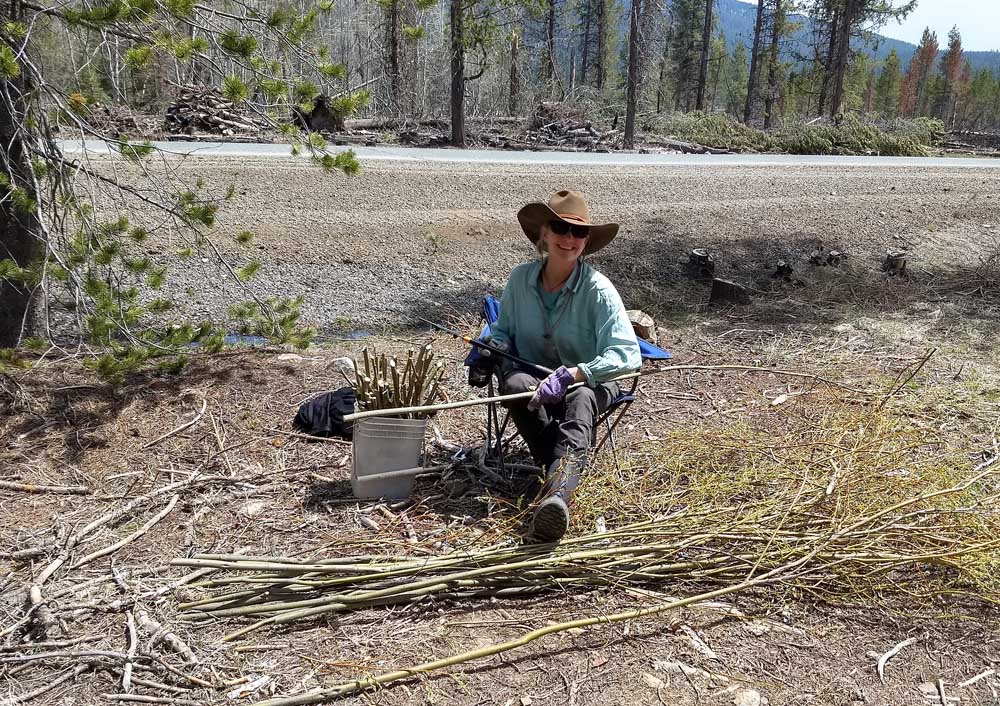Volunteers plant thousands of willow and repair fences in the Malheur watershed
Published 2:45 pm Friday, June 25, 2021

- Volunteer Susan Conner prepares willows for planting along West Summit Creek south of Prairie City.
The native bull trout and redband trout in the Malheur River drainage, located south of Prairie City in the Malheur National Forest, can look forward to cooler river temperatures, thanks to volunteers coordinated by Oregon Natural Desert Association who helped the Malheur National Forest’s Prairie City Ranger District on creek restoration projects in May.
“ONDA volunteers and Forest Service staff collectively planted over 3,700 hardwood willow cuttings and over 650 spruce and larch seedlings, giving the riparian restoration a huge jump start,” said Allen Taylor, U.S. Forest Service Fish Biologist, in a press release.
This successful planting effort took place along West Summit Creek, part of the Malheur River watershed that supports populations of native bull trout and redband trout. It was the final step in the larger West Summit Creek Restoration Project led by Taylor.
“As an advocate for desert waterways, ONDA works on forest creeks that form the headwaters and tributary sources of the desert rivers,” said ONDA Stewardship Coordinator Beth Macinko. “With each project, ONDA puts boots on the ground and ensures that the high desert is a healthy, thriving landscape.”
Volunteers also repaired 2 miles of fences along Summit Creek that had been damaged by downed trees over the winter. The streamside fences were built to protect sections of the creek where restoration projects are in process from grazing by livestock. The repaired fence will protect more than 100 acres of critical riparian habitat and allow native plants to become established and spread.
“Completing both these projects was an impressive feat for just 11 volunteers over the course of one month, but that’s the kind of hard work we are used to from our determined volunteers,” said Macinko.
Robust plant life along streams improves fish habitat by creating the shade that cools water temperatures, provides valuable nutrients for vigorous food webs and provides forage for recovering beaver populations.
“All of this work, along with other associated landscape restoration actions, will make the area more resilient to future fire and drought, which will likely become more frequent due to climate change,” said Taylor.
“We enjoyed the sense of accomplishment in a short period of time of repairing a badly damaged fence,” said Bill Hull of Bend, one of the project volunteers.
The planting and fence repair projects were funded in part by the National Forest Foundation, an organization chartered by Congress to engage the public in maintaining the health of national forest lands.




